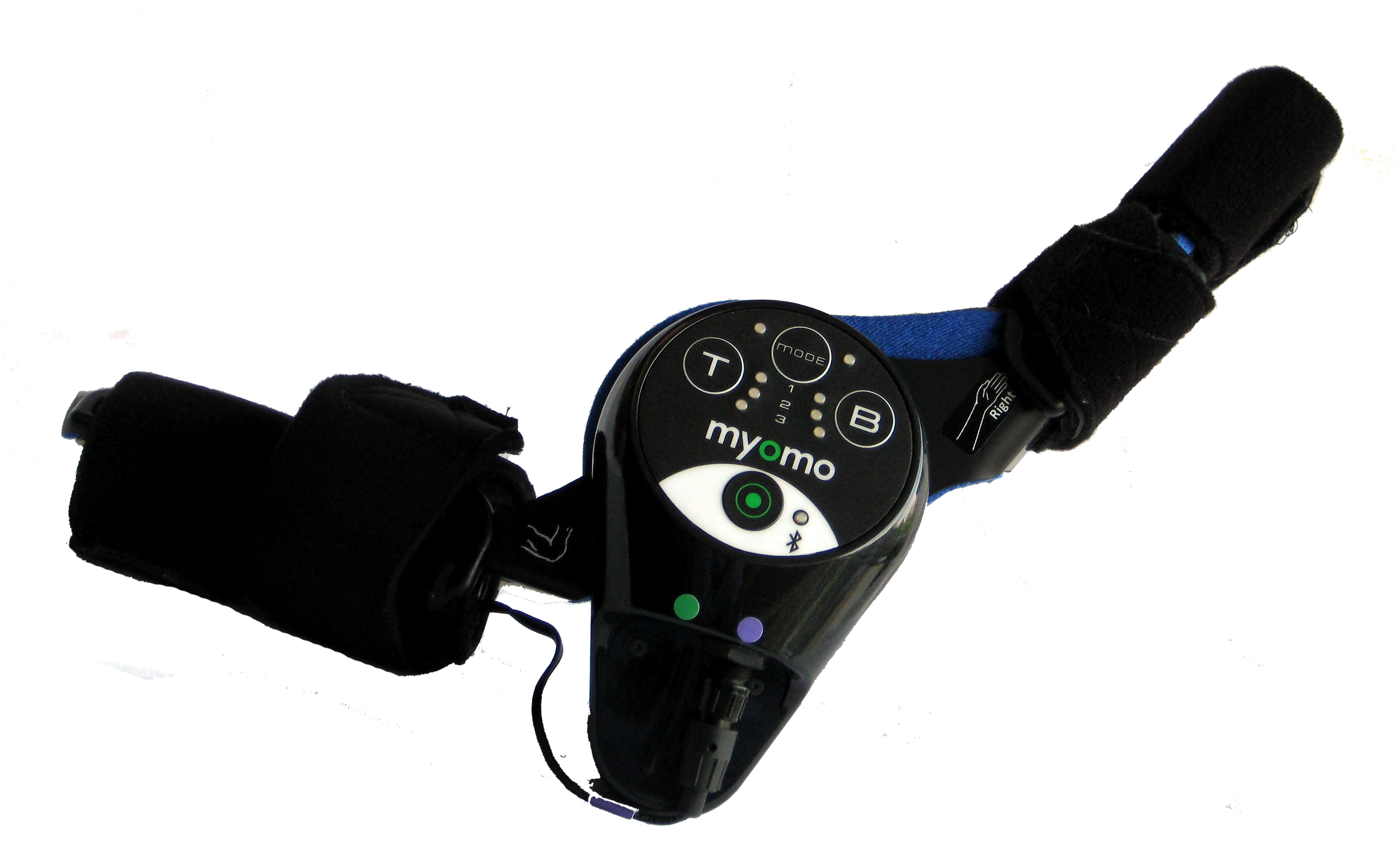Earlier this week, we introduced you to the Ekso, a wearable bionic suit that allows people with paralysis in their legs to stand and walk. Pretty awesome, right? Today, we want to introduce you to some equally cool technology for people with paralysis in their arms.
It’s called the Myomo mPower, and it’s a portable, lightweight arm brace designed to restore movement to arms weakened by injury, stroke or illness. Let’s say you have suffered neuromuscular damage from a stroke, spinal cord injury or MS, and the muscle movement in your arm has been impaired as a result. You may not be able to perform everyday tasks, such as opening a door or picking something up. But wearing this brace would give you the extra power needed to restore that movement – which, as anyone who has ever experienced arm paralysis or weakness will tell you, is huge. Especially at home.
So how does it work? This is the coolest part. Unlike other movement-inducing technologies, the Myomo mPower does not use electrical stimulation or impulses to elicit movement – instead, it utilizes non-invasive myoelectric technology. And here’s what that means in plain English: even if you are unable to move your arm, when you try to move, the muscles in your triceps and biceps send signals to your brain. The sensors on the Myomo pick up on those signals, as tiny as they may be, and translate them into movement.
I know, right?
The portable arm brace has been proven effective in helping with functional repetitive tasks practiced during therapy and assists patients in daily living activities in the home. Magee was the first facility in the Philadelphia area to acquire Myomo and utilize it during therapy – and we have seen it do some incredible things.
Check out the video below to see Myomo in action! And for an update on the patient featured in this video, check this out – you won’t believe how far he has come!





